
Today’s automakers are clever in the use of classic names, such as Dodge bringing the Hornet name back, but does it to introduce a new subcompact crossover. The new Dodge Hornet, all-new for the 2023 model year, brings us a sporty approach to the small crossover segments.
Bringing the same fundamentals found in the Alfa Romeo Tonale that we reviewed last year, the platform-sharing Dodge Hornet has a hint of Italian flare within its interior design that is almost identical to that of the Alfa. Where Dodge has a unique theme is in its exterior design, which properly fits the brand and looks somewhat upscale from a quick glimpse out back where some may mistake it for something like a Porsche Macan, which is a good thing. The sporty appeal is strong in the Dodge Hornet when you opt for the R/T and R/T Plus trims, which give you a more powerful plug-in hybrid electric vehicle (PHEV) drivetrain found in my test vehicle.
Also, don’t forget that you can get discounted new car pricing with a free quote through qualified local dealer partners.
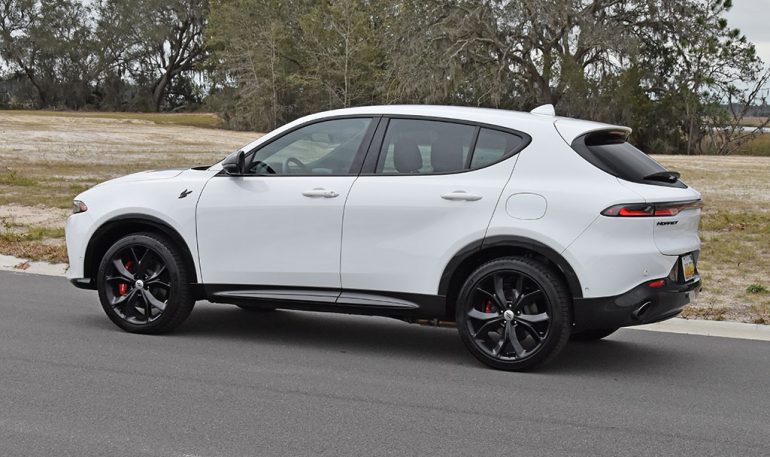
As a PHEV, the Dodge Hornet R/T and R/T Plus get a rather interesting powertrain setup that features a 1.3-liter 4-cylinder turbocharged engine powering the front wheels and a rear axle electric motor to give the Hornet all-wheel-drive. The powertrain works well to manage power output from the electric motor and firing up the gas engine when needed. Together, working in harmony, the power output is as much as 288 horsepower and 383 lb-ft of torque through a unique PowerShot mode that’s engaged by pulling both steering wheel paddle shifters, permitting the additional 30 horsepower for up to 15 seconds. Using the PowerShot mode will get the Hornet R/T up to 60 mph in just 5.5 seconds, which is peppy for a small crossover and properly fits the Dodge brand.
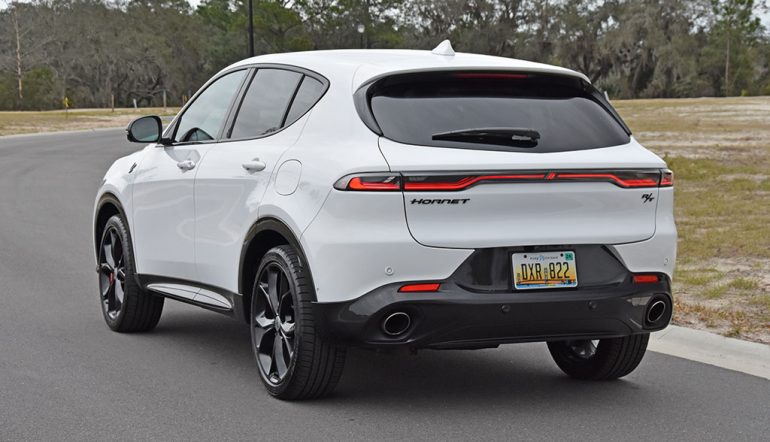
The PHEV drivetrain is sometimes a little indecisive in firing up the engine and tends to remain in the lower gears of its 6-speed automatic transmission, which I figure is the system attempting to recoup energy for its 12.0-kWh lithium-ion battery pack. The ample torque makes the Hornet R/T feel rather punchy, but the power delivery feels somewhat inconsistent, whether you have a fully charged PHEV battery or one that is depleted. Speaking of battery, the PHEV system, when fully charged and you enable the Electric drive mode and drive mostly conservatively so as not to force the vehicle to start up the gas engine for aggressive acceleration, you have an all-electric range of about 32 miles. In my test, that figure is legitimate even in somewhat cooler Florida winter weather at around 50 degrees Fahrenheit.
Despite the inconstancies of power delivery at times, the Dodge Hornet R/T performs rather well and has a nice feeling of being nicely planted with a good ride quality, even with the larger 20-inch wheels Michelin Pilot Sport All Season 4 tires, which seem to be really good, versatile tires. The suspension, with two damper modes, feels too far on the soft side for the rear end that somewhat lofts too much for my taste going over road rides and undulations. The Sport drive mode remedies that suspension lofting but at the expense of having the drivetrain set in a more aggressive mode that isn’t conducive of saving fuel and conserving energy. It would have been nice to allow setting the suspension separate from the drivetrain.
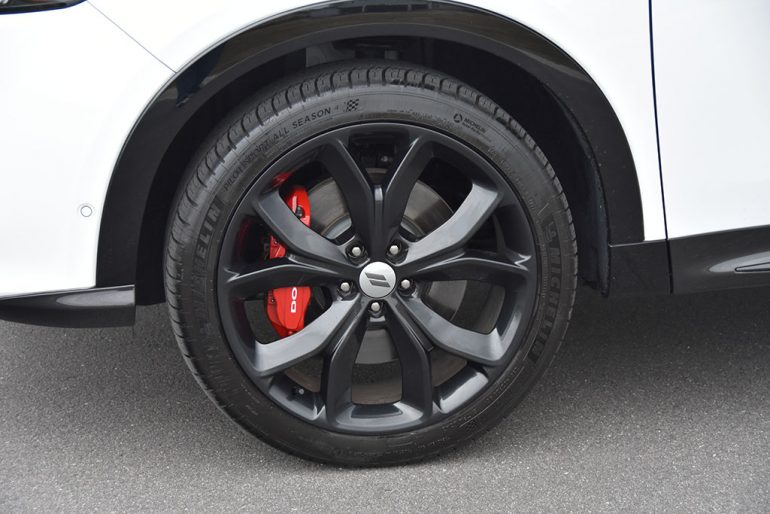
Using just the electric power propels the Dodge Hornet R/T surprisingly well and gets up to speed without lagging far behind highway or interstate traffic. Using the hybrid drive mode, the system hardly ever has a rhythm to how it functions, which is part of the inconsistencies of the PHEV setup in the Hornet, which are nearly the same as I found in the Alfa Romeo Tonale Veloce AWD PHEV. There is a clever ‘e-save’ mode that reserves your battery charge or can be set to charge up the battery as you drive, but doing so will utilize additional fuel, slightly missing that 29-mpg combined EPA estimate. One thing to note is that the Dodge Hornet R/T does slightly edge out the Alfa Romeo Tonale Veloce AWD PHEV in terms of range (2 additional all-electric miles) and overall system power (3 more horsepower and 36 additional lb-ft of torque), even though they share similar components.
The estimated 32 miles of electric-only range is a nice benefit to this small PHEV with a sporty attitude. While able to get the full 32 miles of electric range, the downfall for PHEVs remains that they are down on power unless you use the gas engine. When you charge up the battery pack, you’re using the onboard 7.4-kW charger and a Level 2, 240-volt, 40-amp home charger, which takes just under 3 hours for a full charge for a fully-depleted battery. Unfortunately, there is no DC-fast charging or CCS connection available.
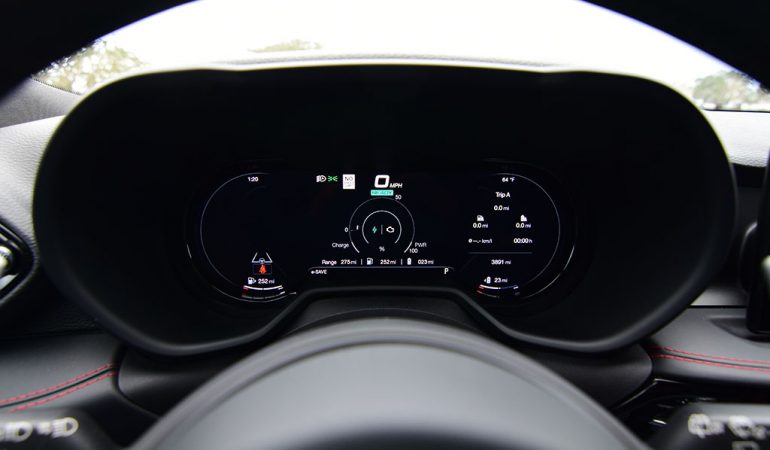
The 29-mpg combined EPA estimate is about right for the real world as I landed at just over 30 mpg during mixed highway and city driving. However, on the highway, I noticed a big change in the fuel consumption where the Hornet R/T seemed to drink more, getting about 27 mpg on average. Another downfall is the fact that the fuel tank is rather small at just 13.5 gallons, which comes out to a range of up to 324 miles or around 356 if you have a fully charged battery and a full tank of recommended premium unleaded fuel.
The cabin of the new Dodge Hornet R/T takes a nearly identical page from the Alfa Romeo Tonale, which isn’t necessarily a bad thing, thanks to the Italian design. The interior space is full of smartly placed soft-touch surfaces, accented red stitching, and attractive heated sporty seats up front that prove to be supportive and mostly comfy.
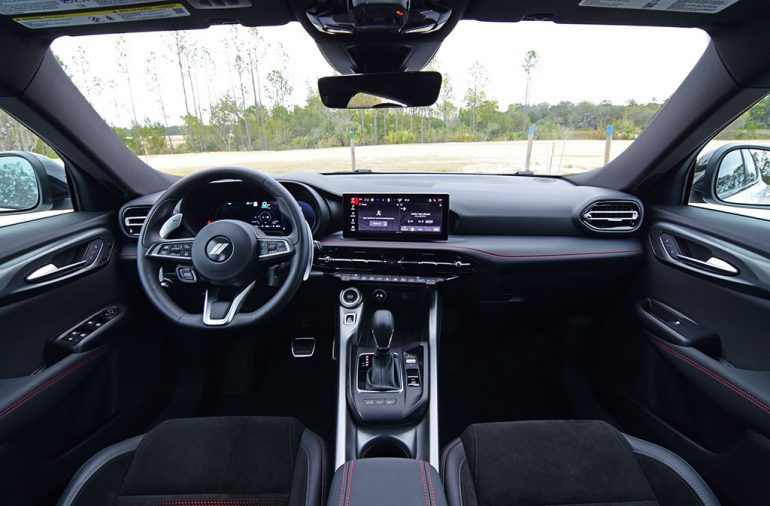
The interior space is cleverly laid out, making the best use of the subcompact segmented space, which can easily be merged into the compact segment. The latest Uconnect 10.25-inch touchscreen infotainment unit has a learning curve that most will have to overcome through a series of using the setup for several days, in addition to becoming familiarized with the smaller onscreen touchpoints as the 10-inch screen is somewhat short, squeezing the graphics. The volume knob, the single physical control for the infotainment system other than the limited steering wheel controls, is a knurled volume scroll wheel next to the gear shifter.
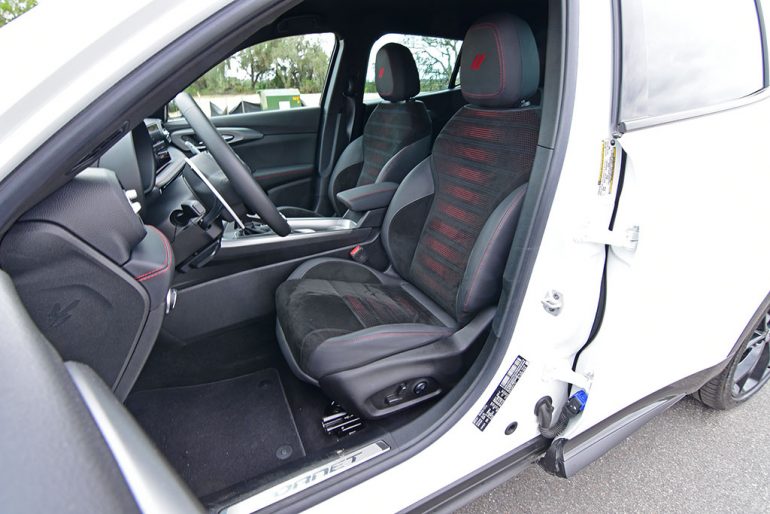
As far as connectivity, the Dodge Hornet R/T combines USB-connected and wireless Apple CarPlay and Android Auto.
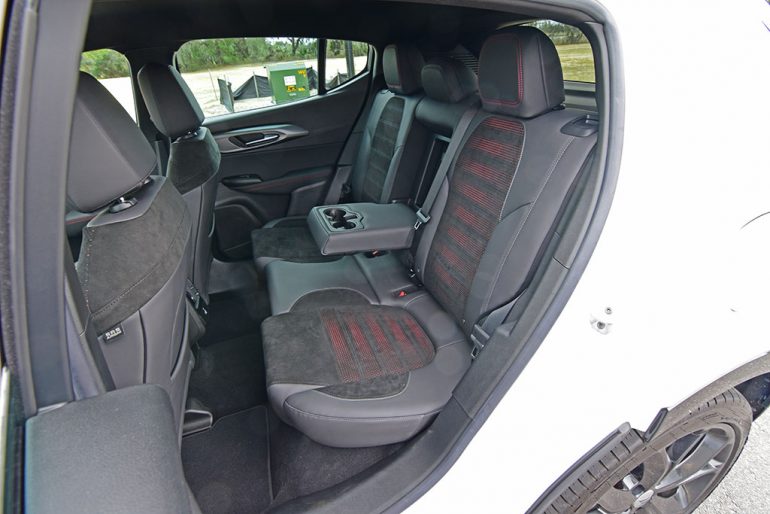
The cargo room is mostly expected for such a class of a crossover having about 23 cubic feet behind the rear seats. Fold down the manual 60/40-split seatbacks, and you have 51 cubic feet of space, which is accessed through a manual liftgate.
The Dodge Hornet R/T with the tech package bundles up all expected active safety features, which include the typical highlights of blind-spot monitors, lane departure warning/lane keep assist, forward collision warning/emergency braking, adaptive cruise control, intelligent speed assist, rear cross-traffic alert, drowsy driver alert, and a 360-degree surround-view camera system.
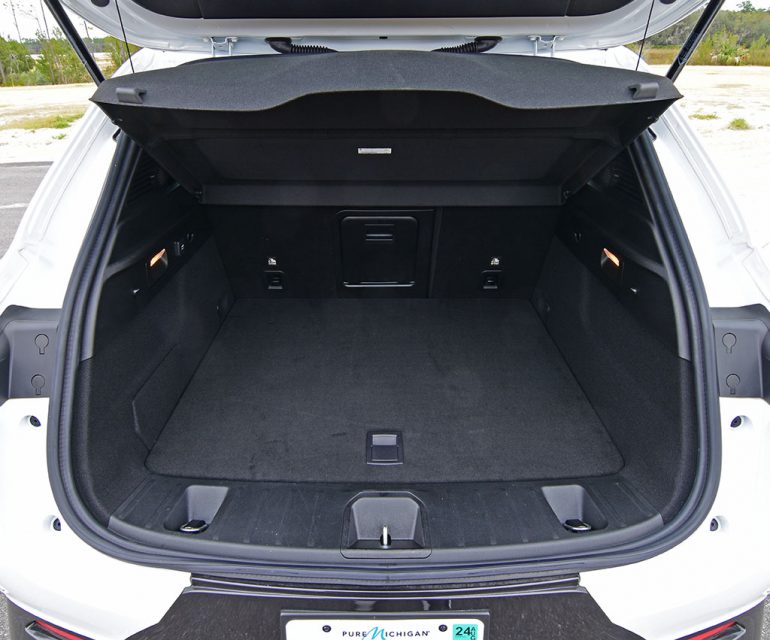
The Dodge Hornet R/T loaded up with the track pack, tech pack, and blacktop bundle of options, gets close to $50K, landing at the as-tested price of $48,930. However, if you don’t load things up, you can get into a Hornet PHEV for around $42,000, which isn’t that bad considering the advanced plug-in hybrid capabilities and versatility of a sporty and powerful subcompact crossover. *The 2024 Dodge Hornet in its base non-PHEV setup starts at $31,400 before any fees or options.